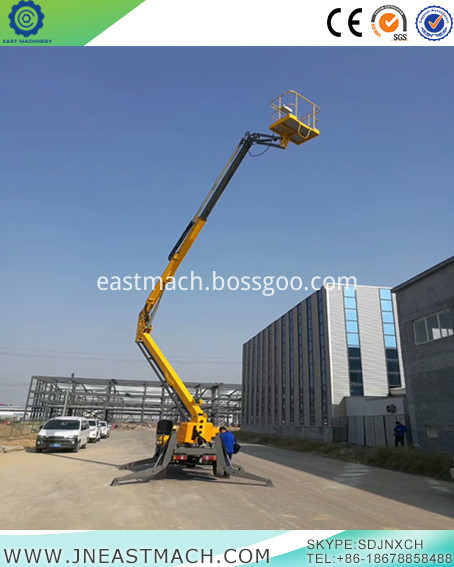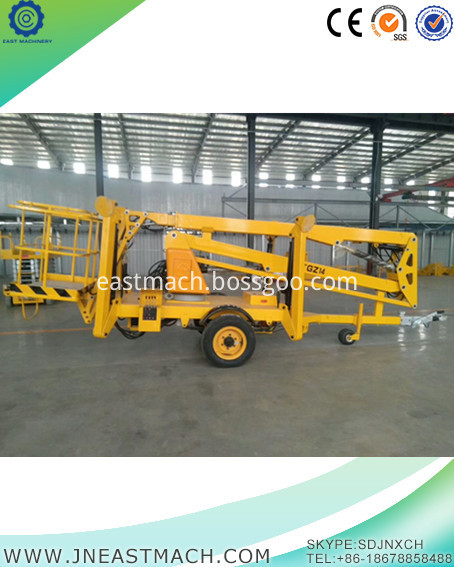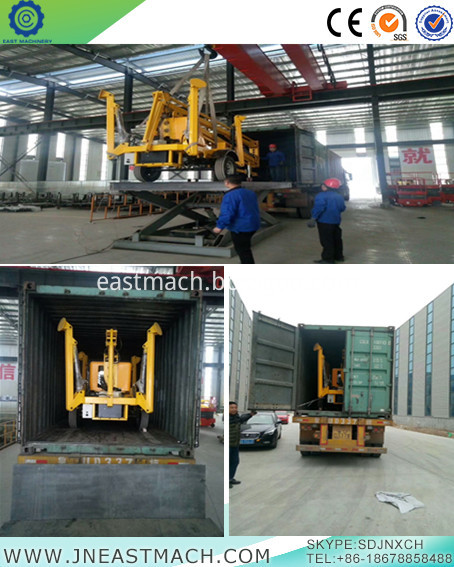
Processing capacity / t·h - | Feeding size / mm | Feed concentration /% | Ascending water metering pressure / MPa | Overflow concentration /% | Ore concentration /% | Rising water volume / m 3 ·h -1 | Drainage port/mm | |||||||||
One room | Second room | Three rooms | Four rooms | One room | Second room | Three rooms | Four rooms | One room | Second room | Three rooms | Four rooms | |||||
16~20 | <1.5 | 20~25 | 0.2 | 3~6 | 25~35 | 20~30 | 20~25 | 20 | 10~15 | 8~10 | 4~5 | 4 | 28~30 | 26~28 | twenty four | 20 |
Self-Drive Hydraulic Telescopic Articulating Boom Lift can overhang operation.
Self-Drive Hydraulic Boom Lift can overcome some obstacles or in a point lifting for more point work.
Telescopic Boom Elevator Table can rotate 360 degrees, load capacity big, available to two people for working at the same time and carry some tools; mobile flexible, transfer work place convenient, appearance beautiful.
Self-propelled Articulating Trailer Boom Lift has automated drive and hydraulic automatic leg.
Mobile Trailer Boom Lifts can be rotated 360 degrees. The bottom of platform is made of checkered steel plate.
Folding Boom Lift Specification Table:
Model
Platform Size
(mm)
Overall Size
(mm)
Lift Height
(m)
Lift Capacity
(kg)
Working Radius
(m)
Weight
(kg)
TGZ-8
1200*800
5200*1585*1900
8
200
4.5
1500
TGZ-10
1200*800
5400*1665*1900
10
200
5
1700
TGZ-12
1200*800
6400*1665*1900
12
200
6
2000
TGZ-14
1200*800
6200*1730*2100
14
200
8.5
2350
TGZ-16
1200*800
7000*1730*2200
16
200
9
2600
TGZ-18
1200*800
7100*1850*2260
18
200
10
4300
TGZ-20
1200*800
7100*1850*2260
19.8
200
12
4450
Model
Moving Speed
(km/h)
Overall Size
(mm)
Lift Height
(m)
Lift Capacity
(kg)
Working Radius
(m)
Weight
(kg)
QB-8
15-30
4000*1700*2700
8
180
3
1500
QB-10
15-30
4000*1700*2700
10.5
180
3.4
1600
QB-12
15-30
4800*2100*3050
12
180
4
1800
QB-14
15-30
5100*2200*3300
13.5
180
4.2
1900
Model
Platform Size
(mm)
Overall Size
(mm)
Lift Height
(m)
Lift Capacity
(kg)
Working Radius
(m)
Weight
(kg)
TGZ-12
1200*800
5200*1750*2100
12
200
7.5
2750
TGZ-14
1200*800
5800*1800*2100
14
200
8.5
3150
TGZ-16
1200*800
6571*1800*2200
16
200
9.5
3450



Application Area:
Folding Boom Elevator are widely used in highways, boat yards shopping walls, stadiums, residential property, mining workshops and any other isometric maintenance operation of complex high-altitude construction.
If you have any questions, please contact with us directly. Folding Boom Lift are produced with High Quality and Good Appearance. Welcome you can visit our Factory. For inqury, Please send mail directly to us.Folding Boom Lift
Boom Lift Rental,Genie Lift Rental,Aerial Lift,Cherry Picker Rental
Jinan East Machinery Co.,Ltd. , https://www.jneastmach.com